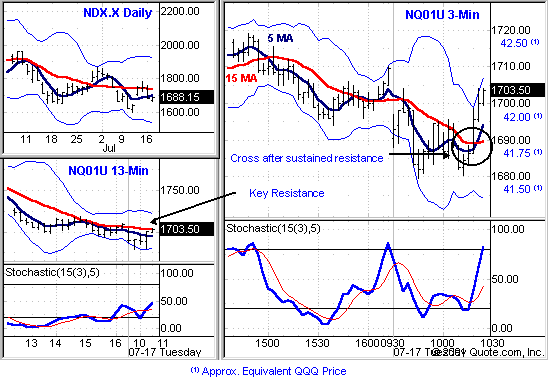|
Yields
I mentioned yesterday that I’ll be sharing some of my views on
trade management. Let’s start by talking a bit about yields. (No,
this isn’t a bond column. I can spell bonds, but that’s where any
insight quickly ends.) So what the heck are yields and what
are they doing in an equity trading column? Suffice it to say that
in the world of trade management, I really dislike the term
“stop,” which despite its incredible importance, can
lead to some poor trade habits, simply based on the term. Pick
another term: pause, time-out, break, intermission, whatever. I
seem to have simply settled on the term “yield.”
So what bad habits can develop simply based on a silly name? Well
my trading records over the years, particularly in the early times
and even a few in recent years, clearly show that my largest
trading losses and perhaps more importantly, missed opportunities,
were typically the result of poor trade execution where I took a
stop which was precisely that: stopped, done, out of trade, done, kaput,
see you later. (“Can
you say ‘stopped HLTH 120 without a reentry?’ ” he asks, in
his best Mister Rogers voice.)
Having said that, here are a few of my personal rules that I’ve
adapted over the years with respect to yields. There’s
certainly no pride in authorship, as some have been long-known and
well-published trading rules, yet I’ve added a few twists, based
on my own experiences and beliefs.
Taking a stop is “yielding” to the market’s
right-of-way.
- Yields will preserve your trading capital and life.
- My yields are premise-based and not price-based.Â
If the signal triggering my entry disappears, I’m out…for the
moment.
- I won’t enter a trade where I can’t control my loss
(e.g., no overnights or IPOs).
- Trade work and focus continue and intensify after
yielding to the market.
- Yielding is merely executing a business plan.Â
The market will move in one of two directions after each trade
entry…and the probability of either is always less than 100%
- Any realized losses resulting from yields are a
necessary cost of doing business
- Despite frequent intraday trades and ending in cash
every night, I view a “trade” as a day, week, and
month as one “trade” with many components, to help to
reinforce the yield concept.
As with any trader input, take it for what it’s worth and
incorporate what works for you. I will say that refining the list
did cost me some nice tuition over the years, and I hope the
different twist helps provide an improved perspective.
Good trading and wish me well at the dentist.
Don Miller
|

